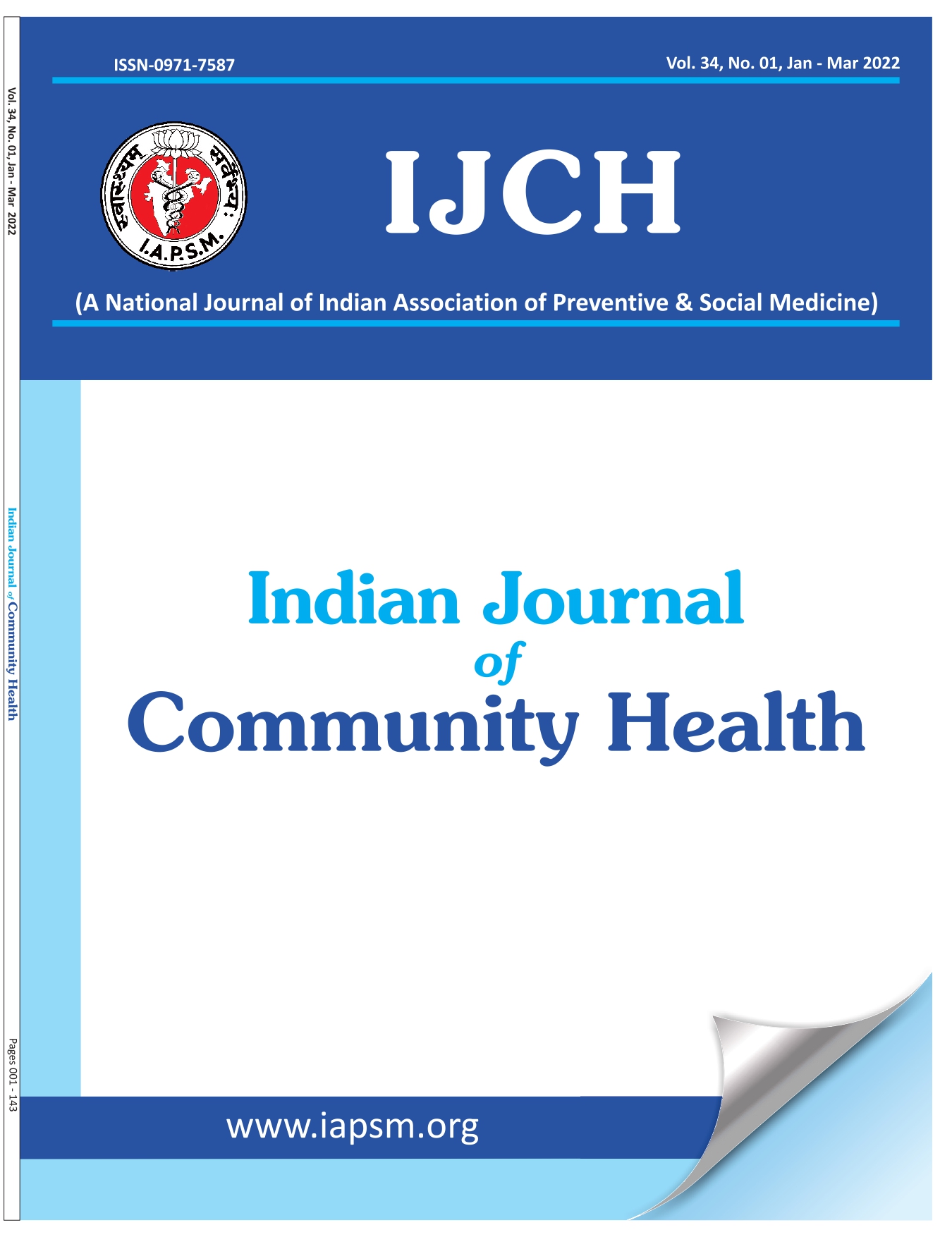Association of antenatal care and birth outcome: A community based cross-sectional study in Bundelkhand region of Uttar Pradesh
DOI:
https://doi.org/10.47203/IJCH.2025.v37i01.015Keywords:
Pregnancy Outcome, Prenatal Care, Live Birth, Still Birth, AbortionAbstract
Background: Adverse birth outcome is a major health concern especially in developing nations and abortion & stillbirth are two most common forms of natural pregnancy losses. The prevalence of stillbirth (4.2 to 14.8) is reported to be widely variable across the Indian states; whereas an estimated number of abortions in India was 15.6 million in the year 2015. Aims & objectives: To find an association between antenatal care factors with birth outcome in Bundelkhand region of Uttar Pradesh. Methodology: A community based cross-sectional study was conducted among 406 registered pregnant women in rural area of Banda District. A multistage simple random sampling was used. House to house visit was paid to collect the data. Results: The birth outcomes reported in the present study were: live birth (91.6%), stillbirths (5.9%) and spontaneous abortions/miscarriage (2.46%). 25% of all babies were born with a low birth weight, 20% of all deliveries were pre-term in nature, and 10% were home deliveries. Conclusion: The quality and frequency of antenatal care services has significant association with birth outcome. Early ANC registration, four or more ANC visit, consumption of IFA and deworming tablets and getting dietary counselling during pregnancy were important for favourable birth outcome i.e. live birth.
Downloads
References
Lawn JE, Lee AC, Kinney M, Sibley L, Carlo WA, Paul VK, et al. Two million intrapartum-related stillbirths and neonatal deaths: where, why, and what can be done? Int J Gynecol Obstet. 2009;107(Suppl 1):S5–19.
Lawn JE, Blencowe H, Waiswa P, Amouzou A, Mathers C, Hogan D, et al. Stillbirths: rates, risk factors, and acceleration towards 2030. Lancet. 2016;387(10018):587–603.
International Institute for Population Sciences (IIPS) and ICF. National Family Health Survey (NFHS-4) 2015-16. Mumbai: IIPS; 2021. https://dhsprogram.com/pubs/pdf/fr339/fr339.pdf (Accessed on 25-02-2025)
International Institute for Population Sciences (IIPS) and ICF. National Family Health Survey (NFHS-5), 2019-21. Mumbai: IIPS; 2021. https://dhsprogram.com/pubs/pdf/FR375/FR375.pdf (Accessed on 25-02-2025)
Kumari R, Mengi V, Kumar D. Maternal risk factors & pregnancy wastage in a rural population of Jammu District. JK Sci. 2013;15(2):82–5.
Kuppusamy P, Prusty RK, Chaaithanya IK, Gajbhiye RK, Sachdeva G. Pregnancy outcomes among Indian women: increased prevalence of miscarriage and stillbirth during 2015-2021. BMC Pregnancy Childbirth. 2023;23(1):150.
Downloads
Published
How to Cite
License
Copyright (c) 2024 Yashvant Singh, Shailendra Singh Chaudhary, Suneel Kumar Kaushal, Mohd. Maroof, Lal Divakar Singh, Tarnnum

This work is licensed under a Creative Commons Attribution-NonCommercial-NoDerivatives 4.0 International License.





